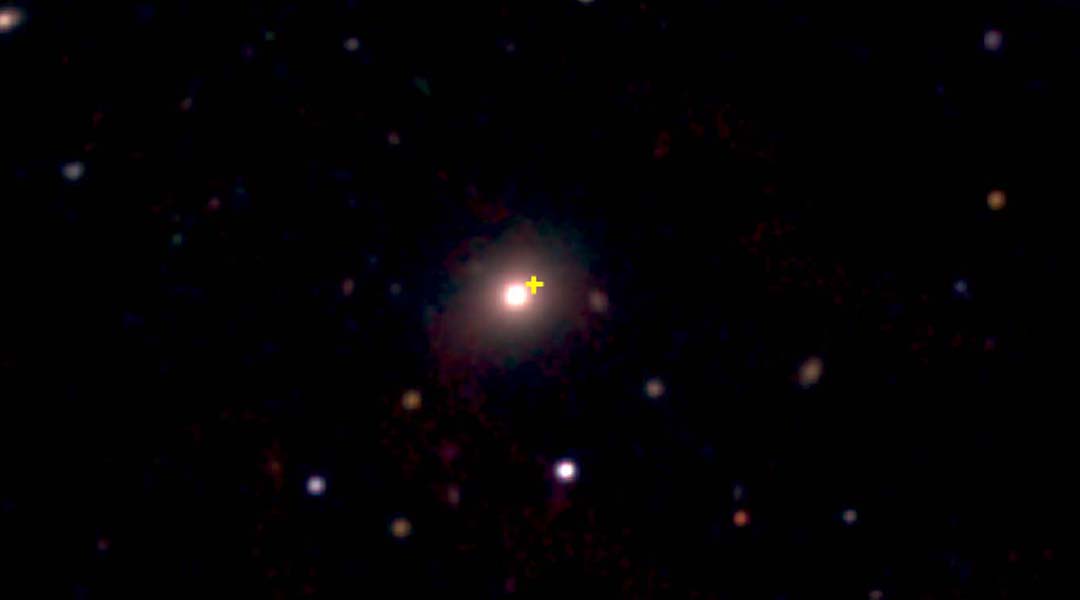The most common form of cosmic explosion witnessed in the Universe by astronomers are supernovas, which emit so much light that they can briefly outshine the combined light of every star in an entire galaxy.
Coming in a variety of types, supernovas can arise from the final death throes of a massive star as it collapses to birth a neutron star or a black hole or from stellar remnants called white dwarfs, exploding after stealing stellar material from a binary companion.
These blasts can release as much energy as 1028 megatonnes instantaneously. The Sun puts out 1011 megatonnes of energy each second, but it would still take our star 3.17 billion years to emit as much energy as a supernova.
The brightest cosmic explosion ever seen
Now, astronomers may have uncovered a class of cosmic explosions that appear to be even more powerful, bright and energetic than supernovas. Even more extraordinarily, the first of these blasts — given the designation AT2022aedm — put out energy equivalent to hundreds of billions of Suns, but still only lasted half the time of a typical supernova.
The astronomers who made this discovery using the ATLAS network of robotic telescopes located in Hawaii, Chile, and South Africa described their findings in a paper published in The Astrophysical Journal Letters.
“We’ve been hunting for the most powerful cosmic explosions for over a decade, and this is one of the brightest we’ve ever seen,” lead author and Queen’s University Belfast researcher, Matt Nicholl, said in a statement from the institution. “Usually, with a very luminous supernova, it will have faded to maybe half of its peak brightness within a month. In the same amount of time, AT2022aedm faded to less than one per cent of its peak — it basically disappeared!”
Nicholl added that he and the team have given the class of cosmic explosions that AT2022aedm represents their own distinct name with an unusual inspiration.
“We have named this new class of sources ‘Luminous Fast Coolers’ or LFCs. This is partly to do with how bright they are and how fast they fade and cool,” he explained. “But it’s also partly because myself and some of the other researchers are huge fans of Liverpool Football Club [also abbreviated to LFC]. It’s a nice coincidence that our LFCs seem to prefer red galaxies!”
Luminous Fast Coolers deliver explosive surprises
Within days of initially detecting AT2022aedm with ATLAS, which scans the entire visible sky over Earth each night, hunting for astronomical objects that change in brightness — transients — or move, the team followed up with the New Technology Telescope.
This revealed that AT2022aedm was unlike any prior known supernova, with the explosion fading and cooling much more rapidly than supernovas do. This was how Nicholl and colleagues knew they were on to something new, but it wasn’t the limit of the surprises delivered by AT2022aedm. The location that the team saw the explosion emerging from was also unexpected.
“Our data showed that this event happened in a massive, red galaxy two billion light years away,” research co-author and Queen’s University scientist, Shubham Srivastav, added. “These galaxies contain billions of stars like our Sun, but they shouldn’t have any stars big enough to end up as a supernova.”
Armed with this information about AT2022aedm, the team set about searching for other examples of LFCs in archival data that have been missed. They found two candidates in the form of cosmic explosions with similar properties to AT2022aedm in data collected by the Robotic Optical Transient Search Experiment (ROTSE) multi-telescope experiment and in the Zwicky Transient Facility surveys conducted in 2009 and 2020.
“The exquisite data set that we have obtained rules out this being another supernova,” Nicholl added. “The most plausible explanation seems to be a black hole colliding with a star.”
To test this mechanism, he and the team will hunt for more LFCs in the local universe much closer to home than the red galaxy 2 billion light years away that hosted AT2022aedm. “Collisions are more likely in dense star clusters, so we can look for these at the sites of the explosions,” Nicholl concluded.
Reference: M. Nicholl., S. Srivastav., M. D. Fulton., et al., AT 2022aedm and a New Class of Luminous, Fast-cooling Transients in Elliptical Galaxies, The Astrophysical Journal Letters, (2023). DOI: 10.3847/2041-8213/acf0ba
Featured image cedit: M. Nicholl, et al., The Astrophysical Journal Letters, (2023). DOI: 10.3847/2041-8213/acf0ba

















